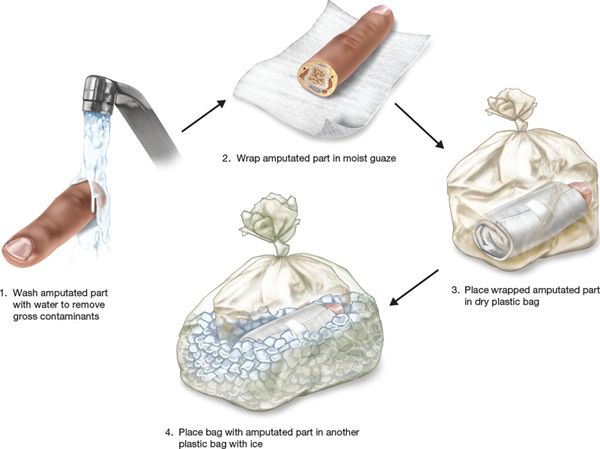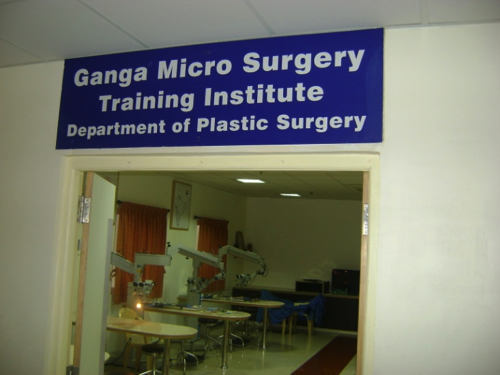Micro Vascular Surgery India
Microsurgery is a specialised surgery which requires an Operating Microscope.
In the field of Plastic Surgery, It allows anastomosis of small caliber blood vessels (typically less than 1mm) like arteries, veins, lymphatics and nerves, allowing transfer of tissue in form of flaps from one part of body to another and reattachment of cut parts.
Microvascular surgery is helpful in reattaching cut fingers, hands, arms, legs, penis and other amputated parts by reconnecting small caliber blood vessels and restoring blood circulation before the tissue starts to die (also known as Warm-Ischemia Time) .
Microvascular surgery is also used in reconstructive surgery in form of Free Flaps.
Microvascular reconstructive surgery involves transfer of autologous (same person, different part of body) vascularized tissue to reconstruct tissue defect. Commonly reconstructed areas include the mouth & oral cavity, all areas of the face, scalp, and neck and rest of the body affected by cancer. The defect in any part of the body is created either due to trauma or cancer, a number of possible donor sites are available for Microvascular Tissue transfer..
Microsurgical techniques are utilized by many specialities such as: General Surgery, Ophthalmology, Gynecology, ENT, Neurosurgery, but has it’s major applications in Plastic Surgery.
Microsurgery reduces the number of hospital days, functional recovery and it provides good prospects for total, or almost total, functional and cosmetic recovery.
Microsurgery has allowed the improved & better coverage of Complex Defects in body due to Trauma or Cancer
Commonly performed Microvascular Surgeries at Saraswat Hospital, Agra are
- Microvascular repair of cut arteries such as Radial, Ulnar, Brachial, Popliteal, Femoral, Anterior Tibial & Posterior Tibial a.
- Microsurgical Repair of cut Peripheral Nerves like Median N, Ulnar N, in both immmediate and late stages
- Repair of Brachial Plexus Injuries
- Free Flaps like Radial a Flap, Lattisimus Dorsi, Free Fibula, Anterolateral Thigh Flaps, Gracilis etc.
- Toe-to-Thumb Transfer. In cases of traumatic or congenital absence of Thumb, we can use the Toes from feet (either great toe or second toe) to reconstruct the thumb. It is a challenging but very rewarding surgery.
- Management of Lymphoedema
- Managing complex defects due to Diabetic Foot
Advantages of free tissue transfer/Free Flaps for covering Complex defects:
Two team can work simultaneously
Improved wound healing as blood supply is directly established
Very large size defects can be covered.
Sensory and motor innervation can be re-established.
Osseointegrated implants for better functional recovery is possible
Wide variety of available flap types
Large amount of composite tissue is available tailored to match defect
Wide range of skin characteristics More efficient use of harvested tissue Immediate reconstruction
Dr Satya Saraswat has been extensively trained in Microvascular Surgery initially during his Plastic Surgery under Dr Yogesh Bhatt at Vadodara Medical College, where around 500-600 Microsurgical procedures were performed every year and later at Microsurgery Lab at Ganga Hospital, Coimbatore under world renowned Plastic & Microvascular Surgeon Dr Raja Sabapathy.
Dr Satya Saraswat is a Life Member of Indian Society of Reconstructive Microsurgery.
Historical facts about Microsugery:
In 1950’s Jacobsen and Suarez—microvascular anastomoses in animals
In 1959 Seidenberg– tried free jejunum segments to repair pharyngoesophageal defects in humans
First replantation was performed by Dr. Ronald Malt at Massachusetts General Hospital in Boston, United States in 1962 where the arm of a 12-year-old child cut at level of proximal humerus was reattached by repairing Brachial artery.
First Finger replant was done by Dr Komatsu & Tamai from Japan in 1965
In 1972 McLean and Buncke used omental flap to cover a cranial defect and this was the first “microvascular” flap.
In 1973 Daniels and Taylor performed First free Skin flap.
In 1976 Baker and Panje– first free flap in head and neck cancer reconstruction was done by Groin flap pedicled on the circumflex iliac artery
Replantation surgery (Reattaching of cut body part) is dependent on time. It should be ideally performed within 6 hours on injury. If there has been a time lag, then preservation of cut portion becomes very important.
A cut part like finger or hand should be first washed with Normal Saline or Tap Water. Then it should be wrapped in moist cloth and wrapped in dry plastic bag. After that this bag is put in another Bag filled with ice.
Microvascular Training of Dr Satya Saraswat by Dr Raja Sabapathy at Ganga Microsurgery Training Institute, Ganga Hospital, Coimbatore
Microvascular Training of Dr Satya Saraswat at Ganga Microsurgery Training Institute, Ganga Hospital, Coimbatore
Microvascular Training of Dr Satya Saraswat at Ganga Microsurgery Training Institute, Ganga Hospital, Coimbatore
Microvascular Training of Dr Satya Saraswat at Ganga Microsurgery Training Institute, Ganga Hospital, Coimbatore
Dr Satya Saraswat Performing the Microvascular Surgery under Zeiss Microscope at Saraswat Hospital, Agra
Microvascular Instruments at Saraswat Hospital, Agra from World’s best Microvascular Instrument Company S&T (Germany), which prevent any crush injury and damage to tiny and delicate blood vessels.
See more photographs of patients operated by Dr Satya Saraswat at Saraswat Hospital by Microvascular Surgery here.
You can read a Case report of Cancer Reconstruction by Microvascular Free Flap here




















